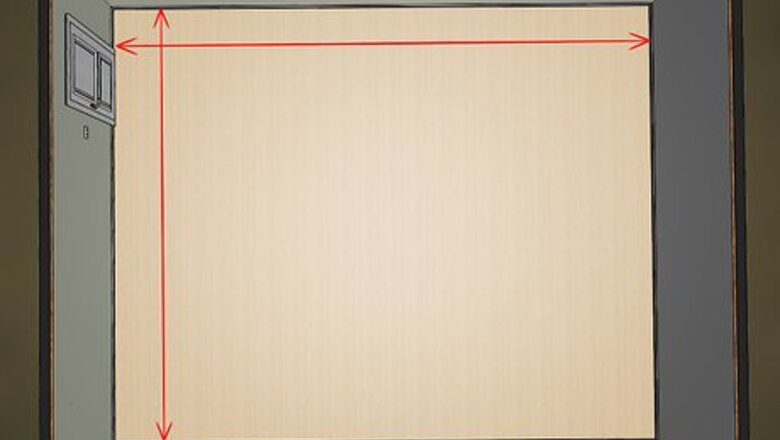
views
Measuring for Ordering
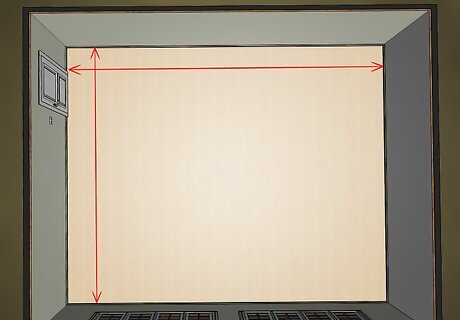
Measure the length of each wall in the room. Use a tape measure and have someone help you, so you can get an accurate measurement of each wall. Make sure that both you and your helper are holding the tape measure at the bottom of the wall, so that you get a true measurement of the length at floor level. If the room is square or rectangular you only need to measure 2 of the walls. They should be walls that are touching at 1 corner, so that you know the length and width of the room. If you have an unusually shaped room, such as one with more than 4 sides, it's important to measure every wall.
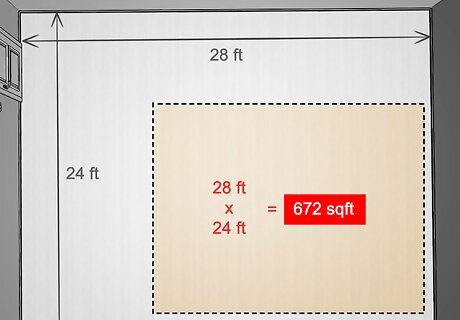
Calculate the square footage of the room. Once you have the wall lengths, you can calculate the total floor space in a room. If the room is square or rectangular, you can simply calculate the square footage by multiplying the length by the width of the room.
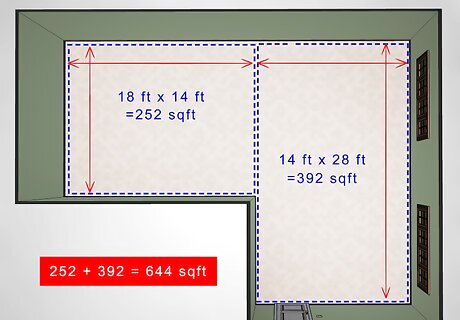
Divide the room up into square areas to get the square footage of an abnormally shaped room. You will need to mentally (or with a drawing) divide the space into square or rectangle portions. Then, you can figure out the square footage of each section and add them together at the end to get the total square footage. For example, if you have an "L" shaped room, divide it into 2 rectangular areas, calculate the square footage of both areas, and then add the square footage together.
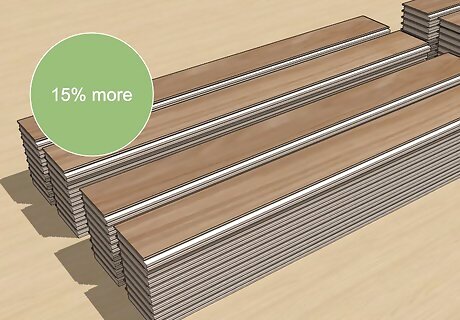
Calculate how much flooring to order based on the square footage. Once you pick a specific laminate you want to use, look at its directions for instructions about how much to order based on the square footage of your room. Follow the manufacturer's directions, which typically has you order a bit more than you will need in case of mistakes during installation. Typically, you want to order about 15% more laminate than your square footage would suggest accounting for cuts and mistakes. To calculate this, multiply the square footage by .15. Then add the total to the square footage.
Measuring During Installation

Measure the levelness of the floor before installation. It is important to install laminate on a level surface so that the finished floor is level and doesn't have peaks and valleys. Get a long carpenter's level and place it in various locations all over the floor. When you find an area that is not level, make a mark on the ground. This will allow you to know where the floor needs to be leveled before installation. If you don't have a level, you can run a board that you know is flat over the surface of the floor. If there are gaps in the middle of the board, you know that area is lower than the surrounding areas.
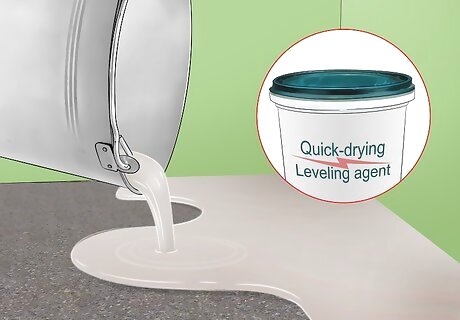
Level the floor, if necessary. If you find that your floor is indeed off of level, you need to fix that. Purchase a leveling compound that is compatible with the flooring that will be under the laminate and the laminate itself. Then apply as directed on the product's instructions.
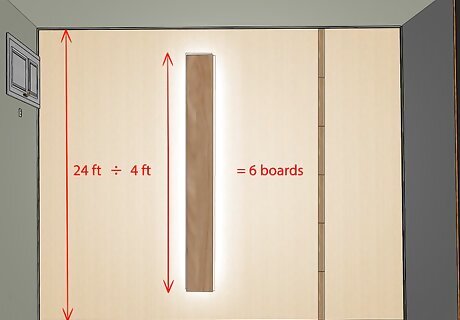
Take the length of the floor and divide it by the width of the laminate pieces. This will give you the number of pieces it will take to span your floor. It's important to figure out how many pieces of flooring will fit in your room in order to ensure that when you get to the end, you won't be left with a very narrow space that is hard to fill with flooring. If you come up with a number less than 2 left over, that means that you will need to use a very thin piece at the end. To avoid this and make installation easier, cut that much off of the width of the first board instead.
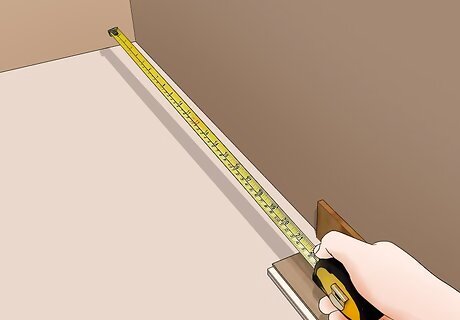
Measure for each piece as you go. It is likely that your first piece of laminate can go down uncut, but the second or third piece will. Measure the empty space, being sure to leave about ⁄8 inch (0.95 cm) expansion space on all the edges of the floor. The space you leave for expansion will be covered up when you put in baseboards or quarter-round molding around the edges of the floor.
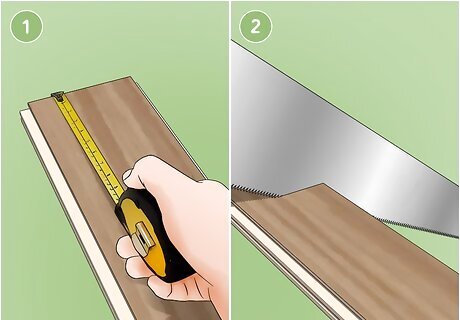
Check your measurements before cutting. Measure twice and cut once is an old and well-known saying for a reason. Before you cut your laminate flooring pieces you should be certain about the length that you need. Measuring accurately will save you a ton of time and will cost you less money because you won't have as much wasted flooring.




















Comments
0 comment